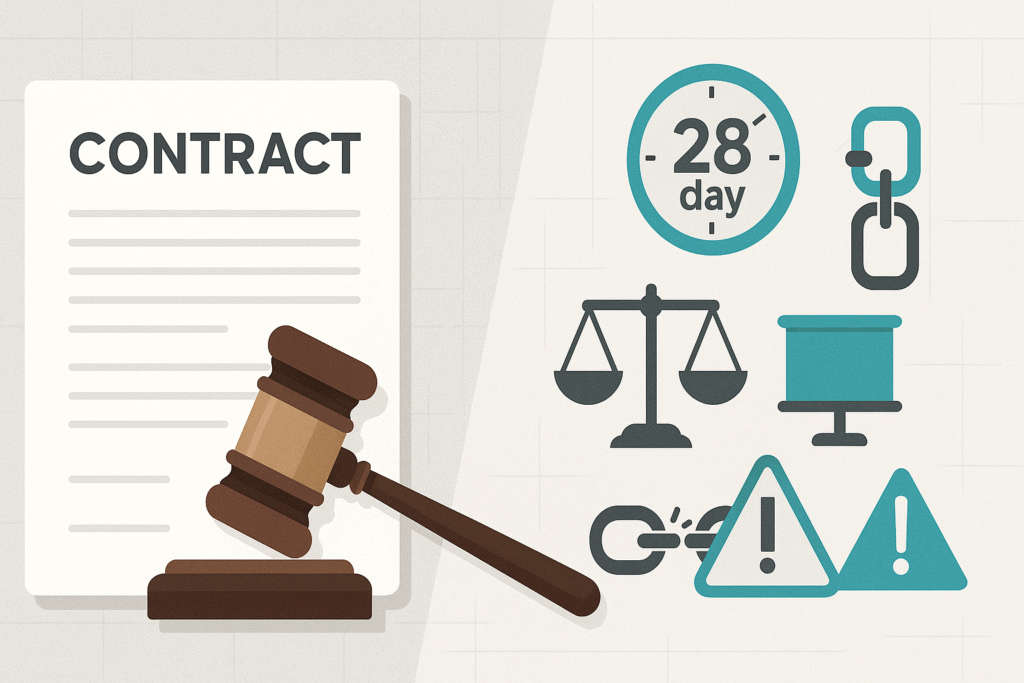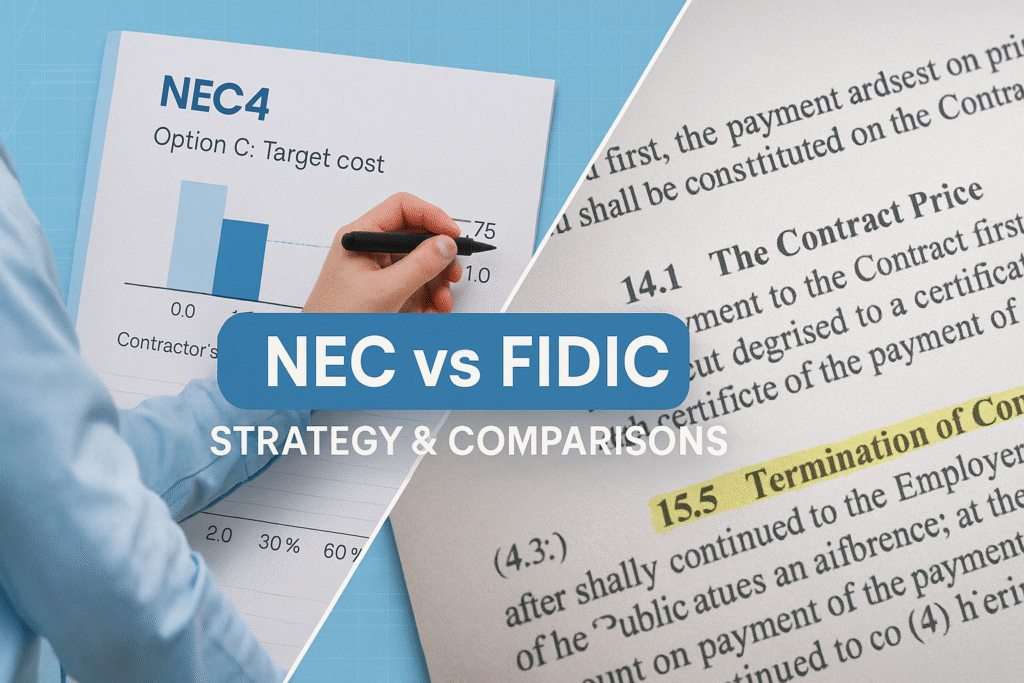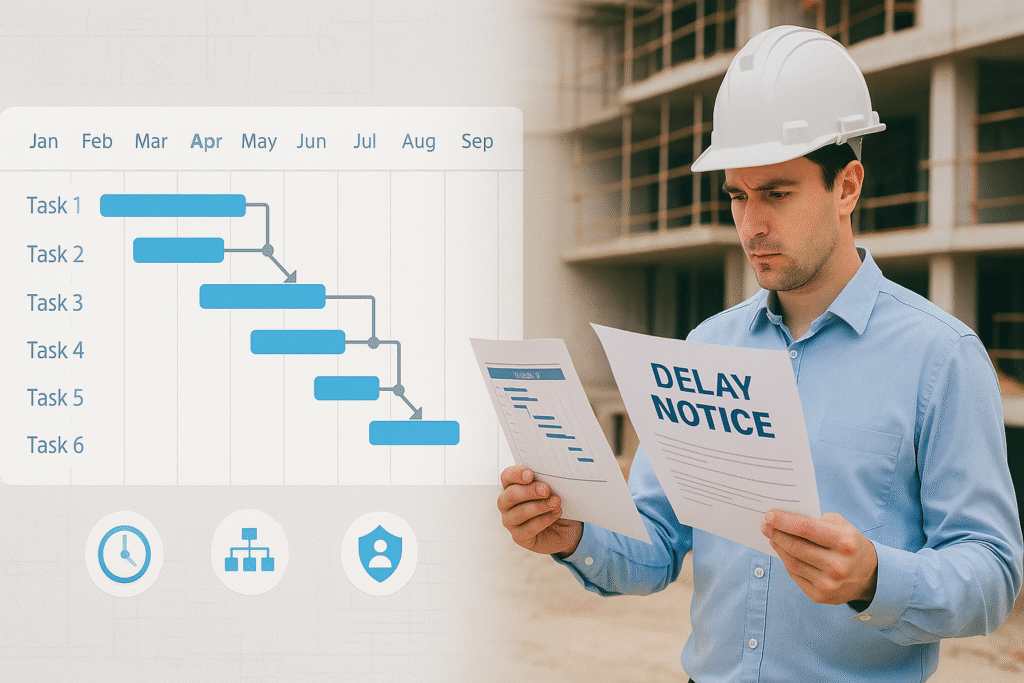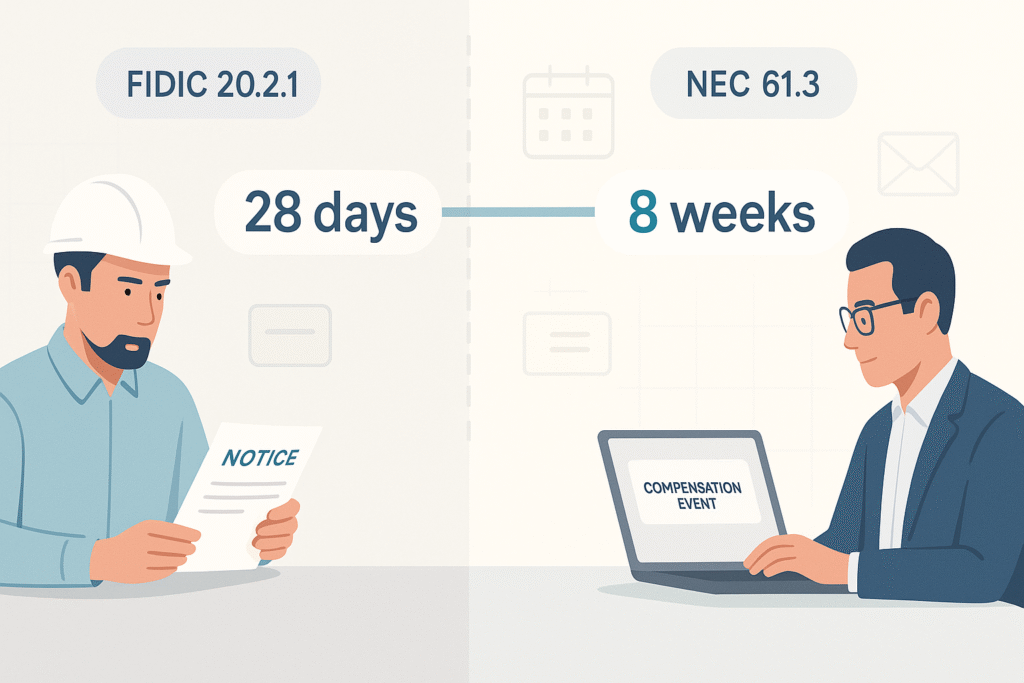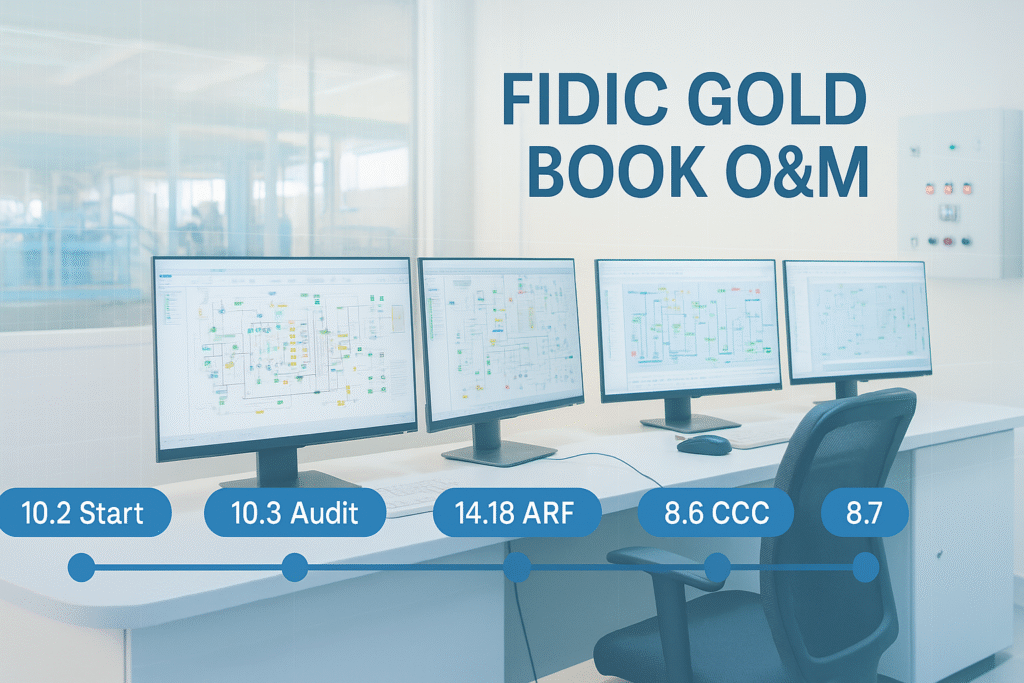Clause 20.2.5 – Bridge from Claim to Decision
![]()
FIDIC Clause 20.2.5 turns a claim into a binding decision. Learn how notices, detailed claims and Engineer determinations connect to DAAB and arbitration.
Clause 20.2.5 – Bridge from Claim to Decision Read More »














